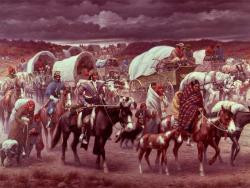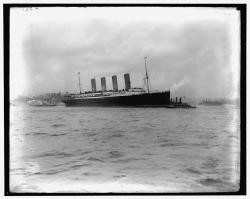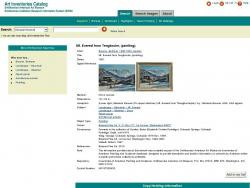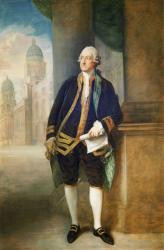Linda Muller
Smithsonian Learning Lab Coordinator
Smithsonian Institution, Heinz History Center
Primary (5 to 8 years old), Elementary (9 to 12 years old), Middle School (13 to 15 years old), Adults, Post-Secondary
Language Arts And English, Science, Social Studies, Arts, Other
Hello, I am one of the Smithsonian Learning Lab Program Coordinators based in Pittsburgh, PA. My professional interests are focused on instructional technology and computer-based learning. I am also fascinated by history as it's presented in primary and secondary resources.
Linda Muller's collections
Trail of Tears
What was the Trail of Tears? What incidents led to the Trail of Tears? Who was removed from their native land? Where did they resettle? What was President Andrew Jackson's opinion on Indian removal? What was John Ross's opinion on Indian removal? What is your opinion on the event?
This Collection was created to be used as an introduction to the "Trail of Tears" event that occurred during the period of Westward Expansion. This Collection contains images of then President Andrew Jackson, John Ross, Chief of the Cherokee nation, and General Winfield Scott. It also includes Jackson's message to Congress, "On Indian Removal", the Treaty of New Echota along with a letter that Chief Ross wrote to the U.S. Congress denouncing the Treaty of New Echota which the government used as legal authority to remove the Cherokee from their native land.
Background Information:
In 1838 and 1839, President Andrew Jackson ordered the relocation of the Cherokee people from their native lands east of the Mississippi River to an area in what is known as present-day Oklahoma.
The Cherokee people called this forced migration the, "Trail of Tears" because of its devastating effects. The Cherokee people suffered hunger, disease, and exhaustion during their journey, resulting in 4,000 deaths out of the 15,000 Cherokees who were forced to relocate.
Source citation: "Trail of Tears." Africans in America. PBS Online. nd. Web. 7 Jan 2016.
 Linda Muller
Linda Muller
11
Little Rock Nine: the integration of Central High School
In a key event of the American Civil Rights Movement, nine black students enrolled at formerly all-white Central High School in Little Rock, Arkansas, in September 1957, testing a landmark 1954 U.S. Supreme Court ruling that declared segregation in public schools unconstitutional. The court had mandated that all public schools in the country be integrated “with all deliberate speed” in its decision related to the groundbreaking case Brown v. Board of Education of Topeka. On September 4, 1957, the first day of classes at Central High, Governor Orval Faubus of Arkansas called in the state National Guard to bar the black students’ entry into the school. Later in the month, President Dwight D. Eisenhower sent in federal troops to escort the “Little Rock Nine” into the school, and they started their first full day of classes on September 25.
Source: Staff, History.com. "Integration of Central High School." History.com. A&E Network. 2010. Web. 5 Aug 2016.
 Linda Muller
Linda Muller
13
Analysis of Resources in a Learning Lab Collection - Teacher Workshop on August 10, 2016
This collection contains two resources - a broadside and a screen print.
Think about how you would use them to deepen your students' comprehension of a particular historical era and how you would use them within your instructional cycle.
 Linda Muller
Linda Muller
4
Manifest Destiny
This collection is comprised of only two resources. It is designed to help students' deepen their analyses of these resources to understand the abstract concept of Manifest Destiny.
 Linda Muller
Linda Muller
3
The Kennedys
This is a topical collection of resources depicting the Kennedy family.
 Linda Muller
Linda Muller
21
Classic American Stories: Moby Dick
This Collection was created to support reading the novel, Moby Dick by American author Herman Melville. It includes resources in the form of online texts, videos, artwork, and photographic images.
 Linda Muller
Linda Muller
16
Macaroni Boy
This Collection features a variety of primary and secondary resources including maps, photographs, texts, and a sound clip to support the historical context of the book, Macaroni Boy.
 Linda Muller
Linda Muller
22
War of Currents
Would alternating current (AC) or direct current (DC) become the dominant power?
This Collection includes images and texts that depict the "War of Currents" that occurred between Thomas Alva Edison and George Westinghouse.
 Linda Muller
Linda Muller
14
The Middle East
A collection of resources depicting the countries that make up the Middle East.
 Linda Muller
Linda Muller
26
Artful Thinking About America's Capital City
What do you think you know about Washington, D.C.? This collection is designed to help students develop and practice their skills for examining and thinking about art that was created to represent America's Capital City.
 Linda Muller
Linda Muller
9
Creating Landscapes
With the resources in this Collection, students will be able to:
1. Analyze various landscapes presented in a work of art.
2. Understand the relationship between humans and the natural world.
3. Identify ways artists use viewpoint, scale, and detail to communicate ideas.
 Linda Muller
Linda Muller
17
Roman Architecture: Arches and Columns
Roman architecture continued the legacy left by the Greeks. However, the Romans were great innovators and quickly adopted new construction techniques, used new materials, and uniquely combined existing techniques with creative design to create some of the worlds most amazing architectural structures.
Many Roman innovations were created in response to the practical changing needs of Roman society and were designed and built across the Roman world guaranteeing their permanence so that many of these great edifices still exist today.
Source citation: Cartwright, Mark. "Roman Architecture." Ancient History Encyclopedia. 2013. Web. 4 Jan. 2016.
 Linda Muller
Linda Muller
21







